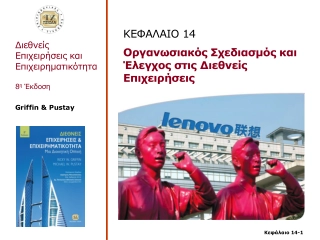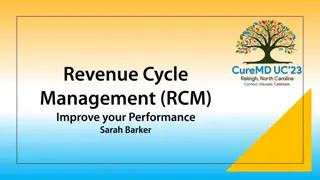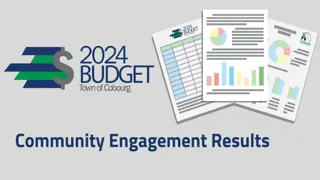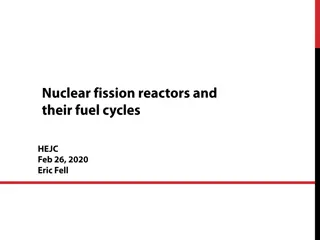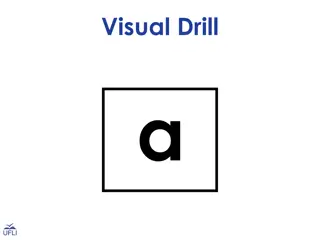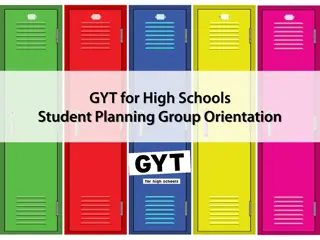
Understanding Greedy Algorithms in Computer Science
Explore the concept of greedy algorithms with examples like Activity Selection and Knapsack Problems. Discover how these algorithms make choices one at a time to achieve optimal solutions in various scenarios. Dive into the world of optimizing algorithms efficiently.
Download Presentation

Please find below an Image/Link to download the presentation.
The content on the website is provided AS IS for your information and personal use only. It may not be sold, licensed, or shared on other websites without obtaining consent from the author. If you encounter any issues during the download, it is possible that the publisher has removed the file from their server.
You are allowed to download the files provided on this website for personal or commercial use, subject to the condition that they are used lawfully. All files are the property of their respective owners.
The content on the website is provided AS IS for your information and personal use only. It may not be sold, licensed, or shared on other websites without obtaining consent from the author.
E N D
Presentation Transcript
Lecture 14 Greedy algorithms! 1
Announcements Homework 6 due today Homework 7 out later today Second EthiCS lecture this Friday (same place and time as regular lectures) 2
More detailed schedule on the website! Roadmap Asymptotic Analysis MIDTERM Dynamic Programming Greedy Algs Graphs! The Future! 3
This week Greedy algorithms! 4
Greedy algorithms Make choices one-at-a-time. Never look back. Hope for the best. 5
Today One example of a greedy algorithm that does not work: Knapsack again Three examples of greedy algorithms that do work: Activity Selection Job Scheduling Huffman Coding (if time) You saw these on your pre-lecture exercise! 6
Non-example Unbounded Knapsack. 7
Item: 11 6 2 4 3 Weight: Value: Capacity: 10 35 14 13 8 20 Unbounded Knapsack: Suppose I have infinite copies of all items. What s the most valuable way to fill the knapsack? Total weight: 10 Total value: 42 Greedy algorithm for unbounded knapsack: Tacos have the best Value/Weight ratio! Keep grabbing tacos! Total weight: 9 Total value: 39 8
Example where greedy works Activity selection CS 161 Class Math 51 Class CS 161 Section Sleep Frisbee Practice You can only do one activity at a time, and you want to CS 161 Office Hours maximize the number of activities that you do. Theory Seminar Orchestra What to choose? Programming team meeting CS 166 Class Underwater basket weaving class CS110 Class CS161 study group Swimming lessons Theory Lunch Combinatorics Seminar Social activity 9 time
Activity selection ai Input: Activities a1, a2, , an Start times s1, s2, , sn Finish times f1, f2, , fn time si fi Output: A way to maximize the number of activities you can do today. In what order should you greedily add activities? 10
Greedy Algorithm a5 a1 a3 a7 a4 a2 a6 time Pick activity you can add with the smallest finish time. Repeat. 14
Greedy Algorithm a5 a1 a3 a7 a4 a2 a6 time Pick activity you can add with the smallest finish time. Repeat. 15
Greedy Algorithm a5 a1 a3 a7 a4 a2 a6 time Pick activity you can add with the smallest finish time. Repeat. 16
Greedy Algorithm a5 a1 a3 a7 a4 a2 a6 time Pick activity you can add with the smallest finish time. Repeat. 17
Greedy Algorithm a5 a1 a3 a7 a4 a2 a6 time Pick activity you can add with the smallest finish time. Repeat. 18
Greedy Algorithm a5 a1 a3 a7 a4 a2 a6 time Pick activity you can add with the smallest finish time. Repeat. 19
Greedy Algorithm a5 a1 a3 a7 a4 a2 a6 time Pick activity you can add with the smallest finish time. Repeat. 20
Greedy Algorithm a5 a1 a3 a7 a4 a2 a6 time Pick activity you can add with the smallest finish time. Repeat. 21
At least its fast Running time: O(n) if the activities are already sorted by finish time. Otherwise, O(n log(n)) if you have to sort them first. 22
What makes it greedy greedy? At each step in the algorithm, make a choice. Hey, I can increase my activity set by one, And leave lots of room for future choices, Let s do that and hope for the best!!! Hope that at the end of the day, this results in a globally optimal solution. 23
Three Questions 1. Does this greedy algorithm for activity selection work? Yes. (We will see why in a moment ) 2. In general, when are greedy algorithms a good idea? When the problem exhibits especially nice optimal substructure. 3. The greedy approach is often the first you d think of Why are we getting to it now, in Week 8? Proving that greedy algorithms work is often not so easy 24
Back to Activity Selection a5 a1 a3 a7 a4 a2 a6 time Pick activity you can add with the smallest finish time. Repeat. 25
Why does it work? Whenever we make a choice, we don t rule out an optimal solution. There s some optimal solution that contains our next choice Our next choice would be this one: a5 a5 a1 a3 a3 a7 a7 a4 a2 a6 time 26
Assuming that statement We never rule out an optimal solution At the end of the algorithm, we ve got some solution. So it must be optimal. Lucky the Lackadaisical Lemur 27
We never rule out an optimal solution Suppose we ve already chosen ai, and there is still an optimal solution T* that extends our choices. ak ai a3 a7 aj a2 a6 time 28
We never rule out an optimal solution Suppose we ve already chosen ai, and there is still an optimal solution T* that extends our choices. Now consider the next choice we make, say it s ak. If akis in T*, we re still on track. Greedy algorithm would choose this one. ak ai a3 a7 aj a2 a6 time 29
We never rule out an optimal solution Suppose we ve already chosen ai, and there is still an optimal solution T* that extends our choices. Now consider the next choice we make, say it s ak. If ak is notin T* Greedy algorithm would choose this one. ak ai a3 a7 aj a2 a6 time 30
We never rule out an optimal solution ctd. If ak is notin T* Let aj be the activity in T* with the smallest end time. Now consider schedule T you get by swapping aj for ak Greedy algorithm would choose this one. ak ai a3 a7 aj a2 a6 Consider this one. time 31
We never rule out an optimal solution ctd. If ak is notin T* Let aj be the activity in T* (after ai ends) with the smallest end time. Now consider schedule T you get by swapping aj for ak ak ai a3 SWAP! a7 aj a2 a6 time 32
We never rule out an optimal solution ctd. This schedule T is still allowed. Since ak has the smallest ending time, it ends before aj. Thus, akdoesn t conflict with anything chosen after aj. And T is still optimal. It has the same number of activities as T*. ak ai a3 SWAP! a7 aj a2 a6 time 33
We never rule out an optimal solution ctd. We ve just shown: If there was an optimal solution that extends the choices we made so far then there is an optimal schedule that also contains our next greedy choice ak. ak ai a3 a7 aj a2 a6 time 34
So the algorithm is correct We never rule out an optimal solution At the end of the algorithm, we ve got some solution. So it must be optimal. Lucky the Lackadaisical Lemur 35
So the algorithm is correct Plucky the Pedantic Penguin Inductive Hypothesis: After adding the t-th thing, there is an optimal solution that extends the current solution. Base case: After adding zero activities, there is an optimal solution extending that. Inductive step: We just did that! Conclusion: After adding the last activity, there is an optimal solution that extends the current solution. The current solution is the only solution that extends the current solution. So the current solution is optimal. 36
Three Questions 1. Does this greedy algorithm for activity selection work? Yes. 2. In general, when are greedy algorithms a good idea? When the problem exhibits especially nice optimal substructure. 3. The greedy approach is often the first you d think of Why are we getting to it now, in Week 8? Proving that greedy algorithms work is often not so easy 37
One Common strategy for greedy algorithms Make a series of choices. Show that, at each step, our choice won t rule out an optimal solution at the end of the day. After we ve made all our choices, we haven t ruled out an optimal solution, so we must have found one. 38
One Common strategy (formally) for greedy algorithms Success here means finding an optimal solution. Inductive Hypothesis: After greedy choice t, you haven t ruled out success. Base case: Success is possible before you make any choices. Inductive step: If you haven t ruled out success after choice t, then you won t rule out success after choice t+1. Conclusion: If you reach the end of the algorithm and haven t ruled out success then you must have succeeded. 39
One Common strategy for showing we don t rule out success Suppose that you re on track to make an optimal solution T*. E.g., after you ve picked activity i, you re still on track. Suppose that T* disagrees with your next greedy choice. E.g., it doesn t involve activity k. Manipulate T* in order to make a solution T that s not worse but that agrees with your greedy choice. E.g., swap whatever activity T* did pick next with activity k. 40
Note on Common Strategy This common strategy is not the only way to prove that greedy algorithms are correct! I m emphasizing it in lecture because it often works, and it gives you a framework to get started. 41
Three Questions 1. Does this greedy algorithm for activity selection work? Yes. 2. In general, when are greedy algorithms a good idea? When the problem exhibits especially nice optimal substructure. 3. The greedy approach is often the first you d think of Why are we getting to it now, in Week 8? Proving that greedy algorithms work is often not so easy 42
Optimal sub-structure in greedy algorithms Our greedy activity selection algorithm exploited a natural sub-problem structure: A[i] = number of activities you can do after the end of activity i How does this substructure relate to that of divide-and- conquer or DP? A[i] = solution to this sub-problem ak ai a3 a7 aj a2 a6 43 time
Sub-problem graph view Divide-and-conquer: Big problem sub-problem sub-problem sub-sub- problem sub-sub- problem sub-sub- problem sub-sub- problem sub-sub- problem 44
Sub-problem graph view Dynamic Programming: Big problem sub-problem sub-problem sub-problem sub-sub- problem sub-sub- problem sub-sub- problem sub-sub- problem 45
Sub-problem graph view Greedy algorithms: Big problem sub-problem sub-sub- problem 46
Sub-problem graph view Greedy algorithms: Not only is there optimal sub-structure: optimal solutions to a problem are made up from optimal solutions of sub-problems Big problem but each problem depends on only one sub-problem. sub-problem Write a DP version of activity selection (where you fill in a table)! [See hidden slides in the .pptx file for one way] sub-sub- problem 47 Ollie the Over-achieving Ostrich
Three Questions 1. Does this greedy algorithm for activity selection work? Yes. 2. In general, when are greedy algorithms a good idea? When they exhibit especially nice optimal substructure. 3. The greedy approach is often the first you d think of Why are we getting to it now, in Week 8? Proving that greedy algorithms work is often not so easy. 62
Another example: Scheduling CS161 HW Personal hygiene Math HW Administrative stuff for student club Econ HW Do laundry Meditate Practice musical instrument Read lecture notes Have a social life 64 Sleep
Scheduling n tasks Task i takes ti hours For every hour that passes until task i is done, pay ci 10 hours Cost: 2 units per hour until it s done. CS161 HW Cost: 3 units per hour until it s done. Sleep 8 hours CS161 HW, then Sleep: costs 10 2 + (10 + 8) 3 = 74 units Sleep, then CS161 HW: costs 8 3 + (10 + 8) 2 = 60 units 65
Optimal substructure This problem breaks up nicely into sub-problems: Suppose this is the optimal schedule: Job A Job B Job C Job D Then this must be the optimal schedule on just jobs B,C,D. Why? 66
Optimal substructure This problem breaks up nicely into sub-problems: Suppose this is the optimal schedule: Job A Job B Job C Job D Then this must be the optimal schedule on just jobs B,C,D. If not, then rearranging B,C,D could make a better schedule than (A,B,C,D)!

